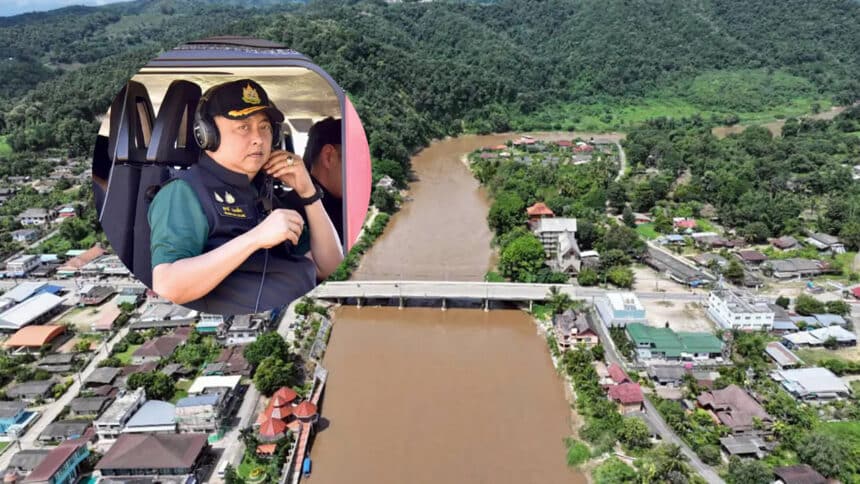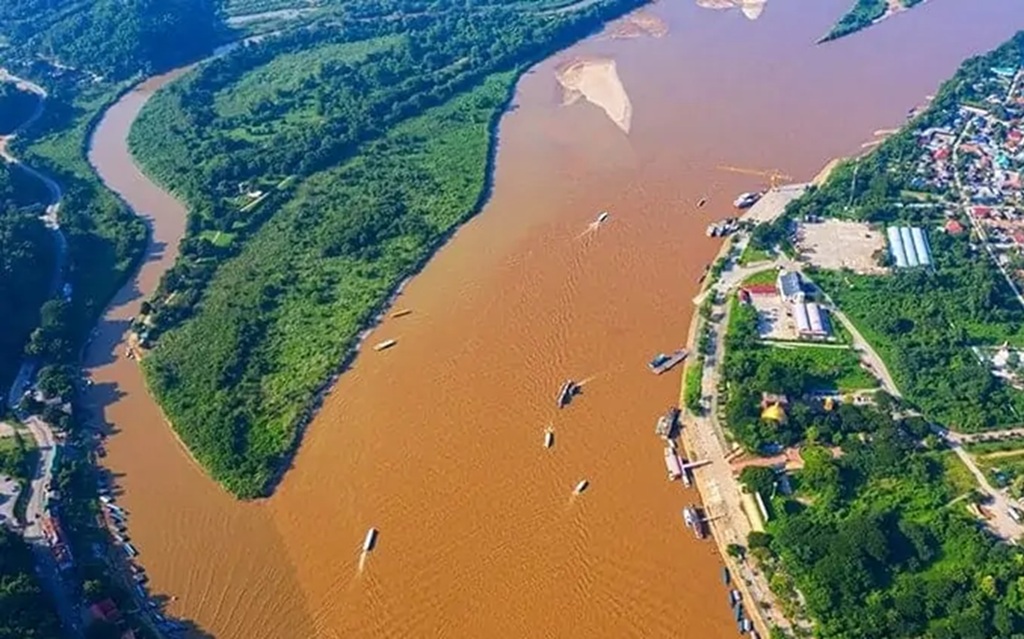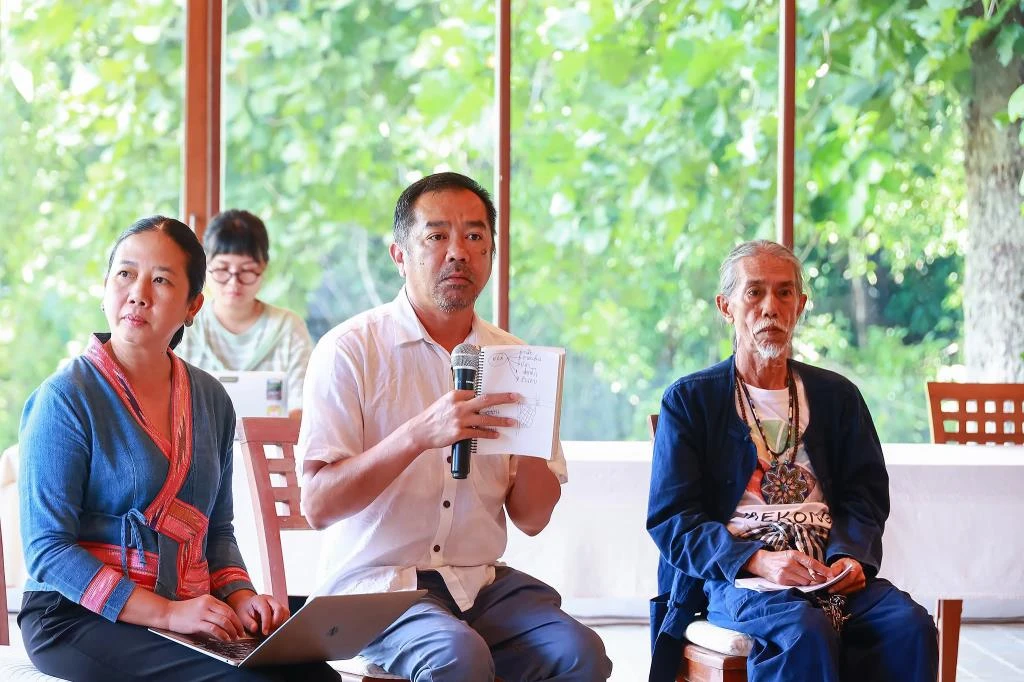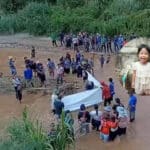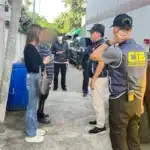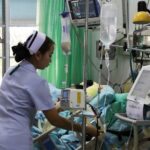CHIANG RAI – On Thursday, the Deputy Prime Minister and Minister of Natural Resources and Environment, Suchart Chomklin, led a team to Chiang Rai and Chiang Mai to meet local teams to track complaints about pollutants in the Kok River.
The group included Chayanan Phakdeejit, Permanent Secretary of the ministry, Kanwee Suebsaeng, MP, Jitphat Kridakorn, Minister’s Secretary, and Surin Warakijthamrong, Director-General of the Pollution Control Department.
Chiang Rai Governor Ratthaphon Naradisorn outlined that the river system has two main basins, the Kok and the upper Mekong. Each has several tributaries that flow into the Mekong. The Kok River supports farming and daily use for many communities.
It begins in the northern mountains near Kengtung in Myanmar, enters Thailand at Mae Ai in Chiang Mai, then runs east through Mae Ai into Mueang Chiang Rai. It continues past Wiang Chai, Wiang Chiang Rung, Doi Luang, and Mae Chan, then turns northeast into Chiang Saen.
Kok River Meets the Mekong
The Kok River joins the Mekong at Ban Sop Kok, Ban Saeo, and Chiang Saen. The Kok River is 285 kilometres long, about 128 kilometres in Myanmar and 157 kilometres in Thailand. Reports of heavy metal contamination began in March 2025.
The issue has raised strong concern among residents and has hurt confidence in travel and the local economy. The visit by the Deputy Prime Minister and his team aims to set urgent policy for the Kok River and reduce public anxiety in Chiang Rai.
Arthit Boonrod, Acting Director of the Provincial Natural Resources and Environment Office in Chiang Rai, shared three proposals to address toxin residues in the Kok River:
- Make contamination in the Kok, Sai, Ruak, and Mekong rivers a national urgent agenda. Start bilateral talks to control mining activities, require mine wastewater treatment before discharge, and draft a cross‑border memorandum of understanding.
- Allocate extra budget for local monitoring and remediation. Agencies involved include the Ministry of Agriculture and Cooperatives (Provincial Agriculture, Provincial Fisheries, Land Development Stations), Ministry of Public Health (Medical Sciences Centres, Provincial Health Offices), Ministry of Interior (Provincial Waterworks, Provincial Administrative Organization), and the Ministry of Natural Resources and Environment (Pollution Control Department, Provincial MNRE Office).
- Support a provincial central laboratory with standard methods to test water, soil, farm produce, and aquatic animals for long‑term surveillance.
Mr Suchart said residents are deeply worried about risks to fish, crops, and human health from long‑term toxin build‑up. He stressed joint work across agencies under the Prime Minister’s direction. The Pollution Control Department will continue water quality testing and send more staff to the field. He will review funding for a local laboratory to speed up sample analysis.
For soils and sediments, the Land Development Department and the Ministry of Agriculture and Cooperatives will run detailed checks. If raw water sources for public supply are affected, the Department of Groundwater Resources will survey and provide groundwater as a backup.
The Department of Fisheries will assess impacts on aquatic life and coordinate with public health agencies to track health risks. The provincial governor will direct all operations on the ground for an efficient response. Given the cross‑border nature of the case, the Ministry of Foreign Affairs will be engaged where needed.
People in Chiang Rai have raised concerns about sediment‑trap weirs. Suchart said the visit gathers views from all sides. Any issue raised by the public will go to a hearing. Projects without community support will not proceed. If a project reflects local needs, agencies will work together to act.
On relief, if households cannot use tap water and crops cannot be sold, the full impact will be reported to the Prime Minister. This covers agriculture, tourism, and daily life. The provincial governor will assess damage. If it meets the criteria, the area can be declared a disaster zone, which allows budgeted aid.
For farm areas, the province is exploring simple flags for clarity. Red flags would mark affected plots, green flags safe plots. This would help sales and avoid blanket refusals. Manpower is limited, so methods must be practical.
Looking ahead to the wet‑season rice harvest, more than one hundred thousand rai are due for harvest at year’s end. If contamination is found, the issue will move to the national level. The Ministry of Agriculture and the Land Development Department will coordinate urgently on testing plans and risk measures.
Residents in Chiang Rai and Chiang Mai along the basin can be confident that the ministry and the government will work to resolve the issue as much as possible.




